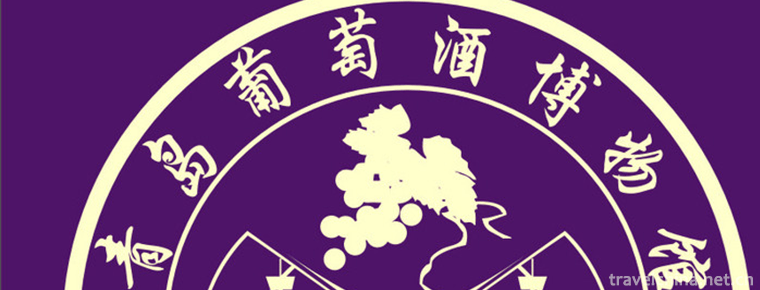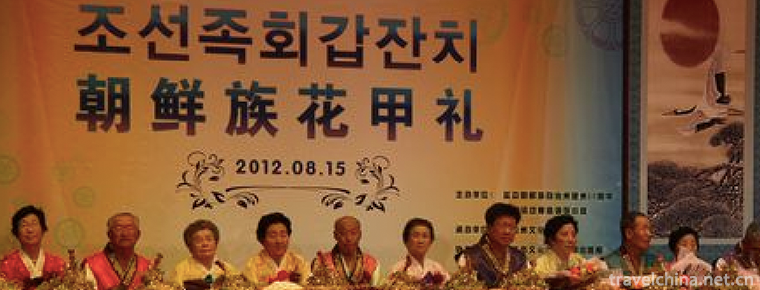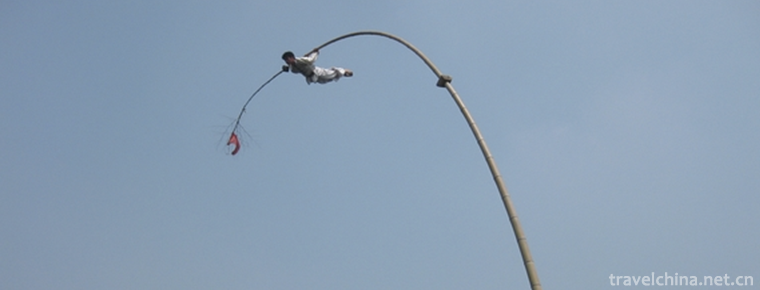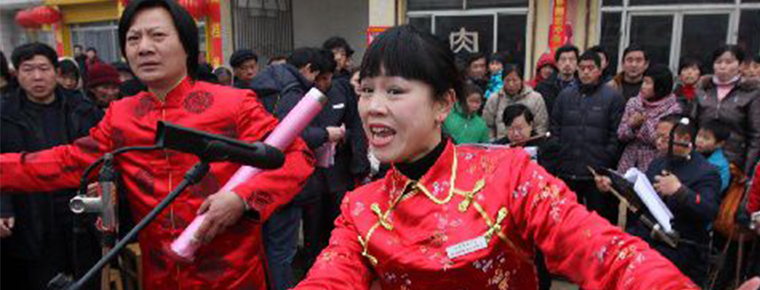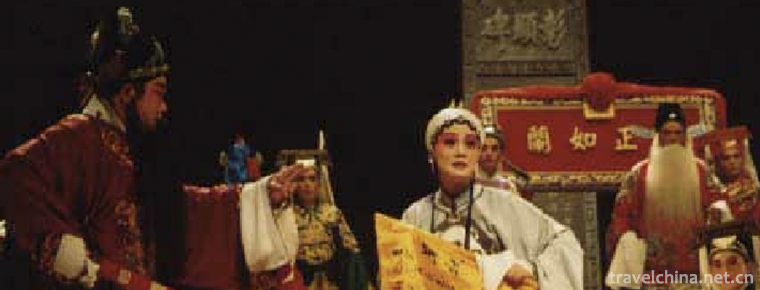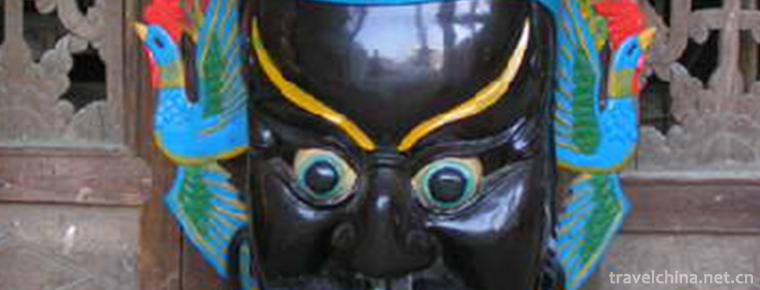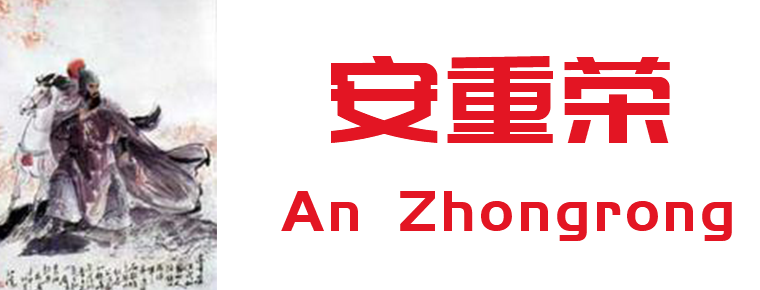Qiangcheng Tourist Area Beichuan
Mianyang Beichuan Qiang Town Tourist Area is located in Beichuan Qiang Autonomous County, northwest of Sichuan Basin. It consists of Beichuan Earthquake Relics Area, Beichuan New County Town, Beichuan Earthquake Memorial Hall, Beichuan Qiang Folklore Museum, Jina Qiang Village and West Tourist Center.
The tourist area is the sixth in Sichuan Province and the first national 5A-level tourist attraction in Mianyang City. It is located in Beichuan Qiang Autonomous County of Mianyang City. It consists of three major parts: earthquake memorial, Daai cultural viewing area and Yuqiang cultural experience area, with a total area of 6.01 square kilometers.
Historical development
Beichuan is the only Qiang Autonomous County in China. For thousands of years, the ancient Qiang ethnic group and 17 ethnic groups such as Han, Tibetan and Hui have multiplied and thrived in Beichuan, forming a simple and profound folk culture.
Beichuan is the hometown of Dayu. Four thousand years ago, Dayu, the ancient hero of water control and the forefather of humanity, stepped out of the Yuxue ditch and opened a new era for the Chinese nation. Beichuan is a city of great love.
"5.12" earthquake, from all sides of the boundless love, the real feelings of the world to the extreme. Phoenix Nirvana, aspiring to rebirth, the beautiful new County town has been built, all of which has given Beichuan eternal life, adding infinite charm to Beichuan Qiangcheng tourist area.
Mianyang Beichuan Qiang Town Tourist Area is located in Beichuan Qiang Autonomous County, Mianyang City, with a total area of 6.01 square kilometers (longitude: 104.45, latitude: 31.82). It consists of Beichuan Earthquake Relics Area, Beichuan New County Town, Beichuan Earthquake Memorial Hall, Beichuan Qiang Folklore Museum, Jina Qiang Village and Wester Tourist Center.
Beichuan Qiangcheng Tourist Area is an open scenic area, which combines commemoration, gratitude, love, Yuqiang customs and ecological leisure. It retains the memory of the "5.12" earthquake disaster, inherits the long history of the Qiang people and splendid national culture, records the great spirit of earthquake relief and the culture of great love. It can recall the storms and hardships of the same boat and witness the heavy bathing fire. Sheng Beichuan has a new look, appreciates the unique charm of Yu Qiang culture and appreciates the beautiful and magnificent scenery.
Main attractions
Overview
Mianyang Beichuan Qiangcheng Tourist Area has the largest and most comprehensive memorial hall to commemorate the "5.12" earthquake event; Beichuan Qiang Folklore Museum is the only Folk Museum in China to fully display the history and culture of the Qiang nationality, is the Beichuan Branch of the Chinese Folklore Museum, is also the largest Qiang Folklore Museum in China, known as the "First Museum of the Qiang Nationality in China"; Panaca Commercial Street is a collection of Commerce and culture. Food and beverage, leisure and entertainment, tourism and reception as one of the characteristics of the pedestrian street; Jina Qiang Village is the Qiang cultural experience sightseeing place, but also the most complete preservation of the traditional culture of the Qiang village.
Earthquake Sites in the Old County Town of Beichuan
Beichuan, with a long history, is the birthplace of the ancient water hero Dayu, known as the "hometown of Shenyu", which was officially established in Tianhe, Emperor Wudi of the Northern Zhou Dynasty, and in the first year (566). In 1952, Beichuan County moved from Yuli Township to Qushan Town, 60 kilometers from Mianyang City and 160 kilometers from Chengdu. The built area is 0.9 square kilometers. It is divided into new and old urban areas. Before the earthquake, there were more than 30,000 permanent residents and floating population in the county. The 8.0 magnitude earthquake occurred at 14:28 p.m. on May 12, 2008. Beichuan County Town was devastated and turned into ruins in an instant. More than 80% of the houses in the old urban area collapsed or were buried by mountains, and more than 70% of the houses in the new urban area collapsed. The rest of the houses became dangerous houses. Especially the mountain around the county town collapsed in a large area due to the earthquake, destroying a large number of buildings, causing heavy casualties.
In accordance with the instructions of former Premier Wen Jiabao of the State Council, we have taken a series of protective measures against the old county town of Beichuan after the earthquake, and started construction of the Earthquake Memorial Hall in Renjiaping to make it the first in the world to preserve the original appearance of the earthquake and flood disaster as a whole, and to integrate the functions of witnessing, exhibiting, commemorating, warning, popularizing science and scientific research into one of social culture, scientific theory and natural heritage protection. Protect the display platform.
5.12 Wenchuan Earthquake Memorial
5.12 Wenchuan Earthquake Memorial Hall is located in Renjiaping, adjacent to the earthquake site of the old county town of Beichuan. It covers an area of 1423,000 square meters and has a building area of 1428,000 square meters. The theme building is called "crack", which implies that the time of disaster will be fixed between the earth like lightning. It is an important part of rebuilding the spiritual homeland of Sichuan Province after the disaster. The "three bases and one window" in the 5/12 Wenchuan earthquake disaster area, the national patriotic education base and the national red classic tourist attraction are determined by the Ministry of Publicity and Propaganda.
5.12 Wenchuan Earthquake Science Popularization Experience Hall covers an area of 3550 square meters, with a building area of 3062 square meters and a exhibition area of 1530 square meters. It complements the 5.12 Wenchuan Earthquake Memorial Hall. It focuses on popularizing earthquake knowledge to people and experiencing the tremendous disasters caused by the earthquake. It shows the theme of "feeling earthquake, spreading knowledge and caring for life". The museum is divided into six parts: time-space tunnel, disaster scene, decryption of earthquake, crossing fault zone, pre-earthquake defense, emergency and rescue. It makes full use of the latest modern scientific and technological means such as realistic scenes, LED video, interactive projection, white film projection, U-cinema and 4D dynamic cinema. It highlights the ornamental, participatory and interactive nature of the exhibition, so that visitors can experience and learn from it. Knowledge, the whole exhibition brings you a new feeling.
5.12 Wenchuan Earthquake Memorial Hall and Earthquake Science Popularization Experience Hall have functions of "commemoration, exhibition, education, publicity and scientific research", and will eventually be built into a world-class earthquake disaster research base and a world-class earthquake science education base.
Barnacha Characteristic Commercial Street
The new County town of Beichuan, Panaca characteristic commercial street, is an important tourism service project assisted by Shandong Province. It has a construction area of 75,000 square meters, a total investment of 250 million yuan, and can provide more than 4000 jobs.
Beichuan New Town, as the only County town to be rebuilt in another place after the earthquake, has sprung up after more than two years of hard work by Shandong builders and Beichuan people. New Beichuan integrates nation and modern, classical and fashion into a city, which has become the symbol of "urban construction project, seismic spirit, cultural heritage", and a model to show the quality and speed of post-disaster reconstruction. At the same time, wind and rain corridor bridge, characteristic commercial street, Qiang Feng residential building and other assistance projects have become a beautiful scenery attracting tourists at home and abroad.
Qiang Folklore Museum
Beichuan Qiang Folklore Museum is located on the central axis of Beichuan New County Town, covering an area of 13,000 square meters and an area of 8002 square meters. The museum is funded by the Macao Foundation with an investment of A$100 million (equivalent to RMB 85.88 million) and is designed and constructed according to the national secondary Museum standards. It has distinct national characteristics and unique style. The exhibition in the museum combines physical form with large-scale scene restoration, and fully demonstrates the characteristics of different times, regions and folk customs by means of modern science and technology such as sound, light and electricity, with emphasis on the characteristics of Qiang folk culture. The museum is a comprehensive service platform integrating collection, protection, exhibition and research. It is an important window to inherit and carry forward the ancient Qiang folk culture. In October 2009, Beichuan Qiang Folklore Museum signed an agreement with China National Museum to become Beichuan Branch of China National Museum.
Jila Qiang Village
Jina Qiangzhai is a village inhabited by Qiang people in the first and second communities of Maoershi Village, Wugu Town, Beichuan County. Zaokou Temple is on the left, Houpi Mountain on the right and Zhakou Temple on the right. In Jina Qiang Village, there is a strong Qiang ethnic sentiment, you can see magical buildings, appreciate folk customs, taste special food, taste good wine.
Dragon Hill
Xunlong Mountain is located to the west of Yongchang Town, with a total area of 3.14 square kilometers. It is characterized by karst landform and conglomerate swarms. It is a national geological park. Wolong Cave in the scenic area is about 7 kilometers deep and has a space of 300,000 cubic meters. There are hidden rivers in the cave. Outside the cave, there are stone buds, stalagmites, water falling caves and small ground crevices. The natural landscape is unique. Longyin Town is the largest film and television shooting base in Southwest China. The scenic spot can accommodate more than 800 people at the same time, such as dining, lodging, showering hot springs and convening meetings.
Wester Agricultural Sightseeing Park
Wester Agricultural Sightseeing Park is located in the southeast of New County Town. It is a key project of supporting Beichuan Agriculture in Shandong Province. It was built by Shouguang Vegetable Industry Group Co., Ltd. Business scope includes demonstration of modern agriculture, research and development of alpine agriculture, trade of Alpine characteristic agricultural products, intensive processing, logistics distribution and storage, agricultural science and technology training, eco-agricultural leisure tourism in mountainous areas, and green ecological catering and entertainment. There are two exhibition halls, East and West, exhibiting exotic flowers and plants, high-quality melons and fruits and High-yielding vegetables, which is eye-opening.
Tourism information
Traffic survey
Public transportation
Aircraft: Chengdu Shuangliu Airport: Chengdu Zhaojuesi Bus Station, Chengdu Zhaojuesi Bus Station to Mianyang Bus Station passenger vehicles, every 15 minutes; then transfer to Mianyang Bus Station to Beichuan passenger vehicles, every 10 minutes;
Mianyang Southern Suburb Airport: Take a bus to Mianyang Bus Terminal, then transfer to Mianyang Bus Terminal to Beichuan passenger vehicles, every 10 minutes;
Train: Mianyang Railway Station gets off and crosses the street to Mianyang Bus Station. It takes passenger vehicles from Mianyang Bus Station to Beichuan every 10 minutes.
Cars: Passenger vehicles from Mianyang Bus Terminal to Beichuan, every 10 minutes.
Self driving
Direction of Chengdu and Deyang: Chengmian Expressway or Chengmian Expressway Double Line - Mianyang South (Mojia) Toll Station - Liaoning Avenue - Tourist Center;
Chongqing and Nanchong Directions: Mianyang Expressway - Mianyang New Bridge Toll Station - Jiuzhou Avenue - Mianyan North Expressway - Liaoning Avenue - Tourist Center;
Direction of Xi'an and Guangyuan: Mianyang Expressway - Mianyang Toll Station - Mianyan North Expressway - Liaoning Avenue - Tourist Center.
Mianyang, Deyang and Guangyuan are the regional tourism destination centers around Beichuan New County Town.
The distance between Beichuan New County Town and Mianyang is about 44 km, and the driving time is about 1 hour.
The distance between Beichuan New County Town and Deyang is about 75 km, and the driving time is about 1.2 H.
The distance between Beichuan New County Town and Guangyuan is about 200 km, and the driving time is about 2.5 hours.
Beichuan new County town around the same level of tourism center towns include Pingwu, Shifang, Maoxian.
The distance between Beichuan New County Town and Pingwu is about 150 km, and the driving time is about 2.5 hours.
The distance between Beichuan New County Town and Shifang is about 70 km, and the driving time is about 1.5 h.
Beichuan New County Town - Maoxian County is about 120 km away, and the driving time is about 2 hours.
The tourism service areas of Beichuan New County Town will include Beichuan County, Jiangyou County, Anxian County, Mianyang County, Shifang County, Maoxian County and Pingwu County.
Tourist route
One-day tour
Beichuan New County Town (Qiang Folklore Museum) - Beichuan Old County Earthquake Site (5.12 Wenchuan Earthquake Memorial Hall) - Xunlong Mountain Scenic Area (or West Agricultural Tourism Park)
Two day tour
1. Beichuan New County Town (Qiang Folklore Museum) - Beichuan Old County Earthquake Site (5.12 Wenchuan Earthquake Memorial Hall) - Xunlong Mountain Scenic Area - West Agricultural Sightseeing Park - Luofushan Hot Spring
2. Beichuan New County Town (Qiang Folklore Museum) - Xunlong Mountain Scenic Area (or West Agricultural Tourism Park) - Jina Qiangzhai - Beichuan Old County Town Earthquake Relics (5.12 Wenchuan Earthquake Memorial Hall) - Xiaozhaizigou
3. Li Bai's Hometown - Jiuhuangshan Scenic Area (or Yao Wang Gu Scenic Area) - Enda Qiangzhai - Beichuan Old County Earthquake Site (5.12 Wenchuan Earthquake Memorial Hall) - Beichuan New County Town (Qiang Folklore Museum)
Three day tour
Beichuan New County (Qiang Museum) - Beichuan Old County Earthquake Site (Earthquake Memorial Hall) - Jiuhuangshan - Yao Wang Gu
Specialty
Thousands of crushed crisps: Beichuan snacks made of maltose, peanuts, walnuts, sesame, etc.
Fancy snacks: Fancy snacks, founded in April 2011, is one of the earliest shops in Panaca Commercial Street. Main types of snacks, such as sad cold powder, hand-made buckwheat noodles, Indian flying cakes, buckwheat dumplings, beef noodles, sausage powder and a series of home snacks.

















-
Baiyun Mountain
located in Baiyun District of Guangzhou City, Guangdong Province.
Views: 163 Time 2018-10-12 -
Yunpu Dongtian Tourist Area
Yimeng Yunpu Cave Tianshan Scenic Area is located in Feixian County, Shandong Province. There are five scenic spots: Tour Stone, Tianmeng Lake, Drunken Stone Forest.
Views: 112 Time 2018-12-22 -
Qingdao Wine Museum
Qingdao Wine Museum is located at No. 68 Yan'an Road, North District of Qingdao City. It is an underground museum with popular science education, collection and display.
Views: 184 Time 2019-02-07 -
Zhangye Danxia National Geological Park
Zhangye Danxia National Geological Park is the only Danxia landform and color hilly landscape complex area in China. Located at the northern foot of Qilian Mountains, 30 kilometers south of Linze Coun.
Views: 186 Time 2019-03-16 -
Korean Huajiali
The flower armor ceremony of the Korean nationality is one of the important rituals of the Korean nationality's birthday ceremony. Since ancient times, the Korean people have regarded respecting the e.
Views: 275 Time 2019-04-16 -
High bar technology
High-pole boat acrobatics is a traditional folk acrobatics project which simulates silkworm babies'silk spinning as cocoon action performed at the sacrificial ceremony of Silkworm God in Zhejiang Prov.
Views: 140 Time 2019-04-30 -
Hu Ji Shu Hui
Hu Jishu Fair is a traditional folk art fair that rose and took root in Huji Town, Huimin County, Shandong Province. Huji is the largest market town in the southeast of Huimin County.
Views: 96 Time 2019-05-03 -
Green Tea Production Techniques
Green tea production technology is a national intangible cultural heritage. Luan Guapian is a special kind of green tea. Cucumber seed-like flake-shaped tea is made from local endemic varieties by wre.
Views: 295 Time 2019-05-15 -
Pingnanping Opera
Pingnanping opera is a kind of traditional opera with a history of 400 years. As the predecessor of Fujian opera, the main features of the opera are that Taobai singing uses Fuzhou Mandarin, the front.
Views: 331 Time 2019-06-09 -
Pingxiang Xiangdong Nuo Mask
Nuo mask is an important part of Nuo culture. It is used in Nuo etiquette, Nuo dance and Nuo opera. Nuo mask in eastern Hunan is an excellent traditional Chinese sculpture with a long history. Eastern.
Views: 167 Time 2019-06-09 -
An Zhongrong
An Zhongrong (- 942 years), Zi tie Hu, Shuozhou (now Shuozhou, Shanxi). The generals of the Five Dynasties and Ten Kingdoms during the late Tang Dynasty and the Late Jin Dynasty..
Views: 263 Time 2019-09-11 -
Suining history and culture
As a place name, "Suining" began in the Eastern Jin Dynasty. The Eastern Jin Dynasty coexisted with the Sixteen States, while Suining belonged to the Chenghan state. At that time, the rulers of various countries had been fighting with each other for years.
Views: 203 Time 2020-12-16


